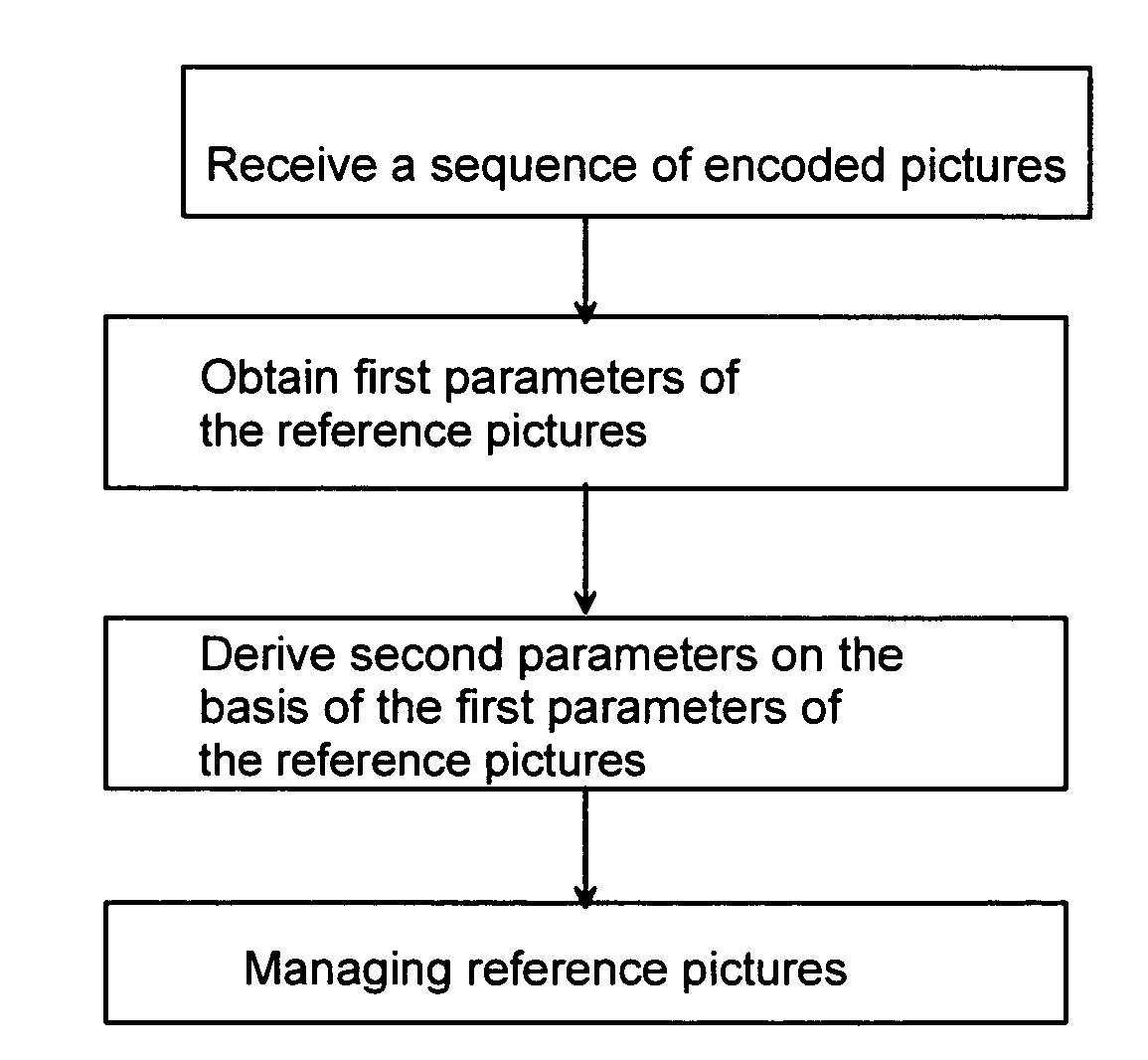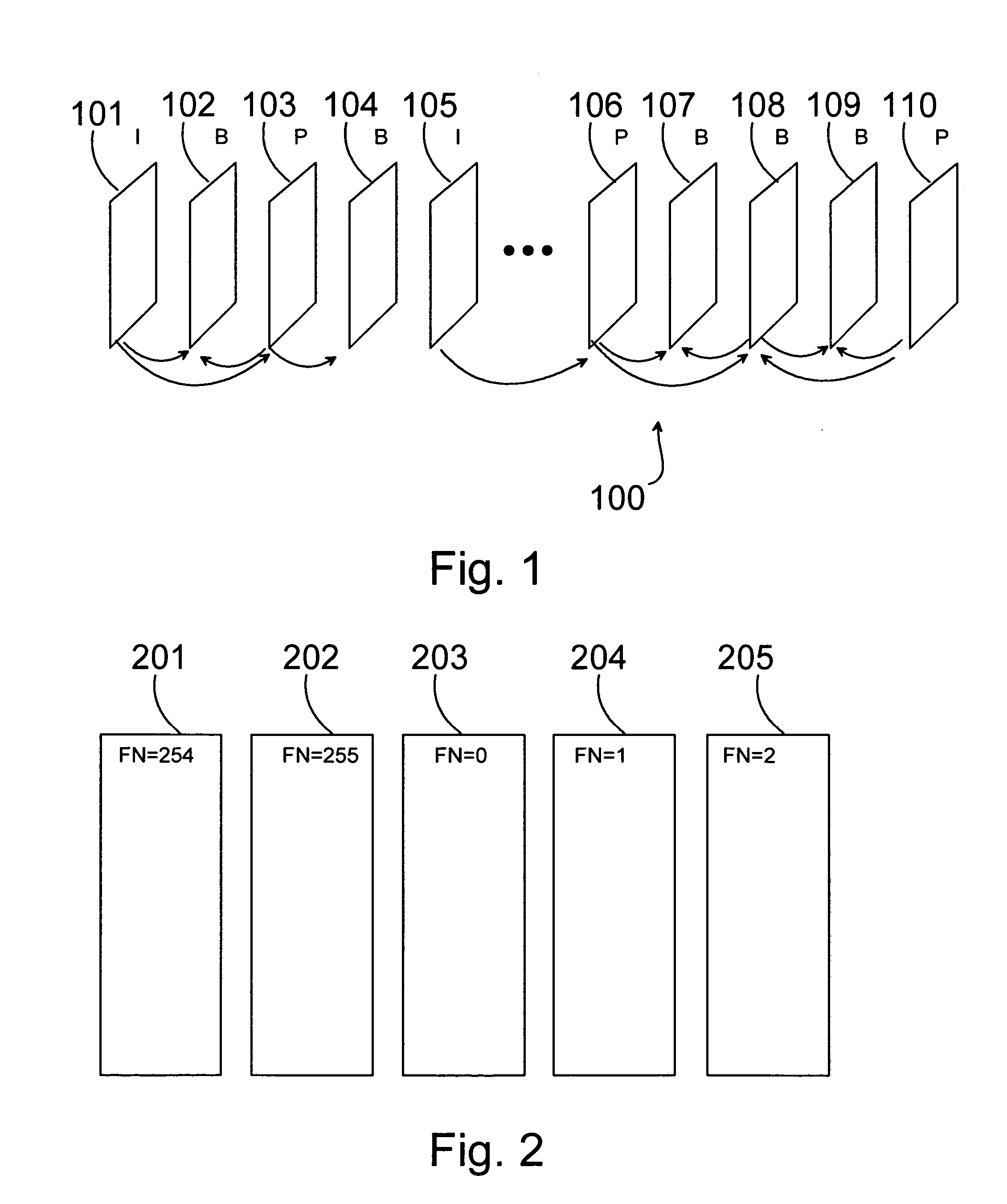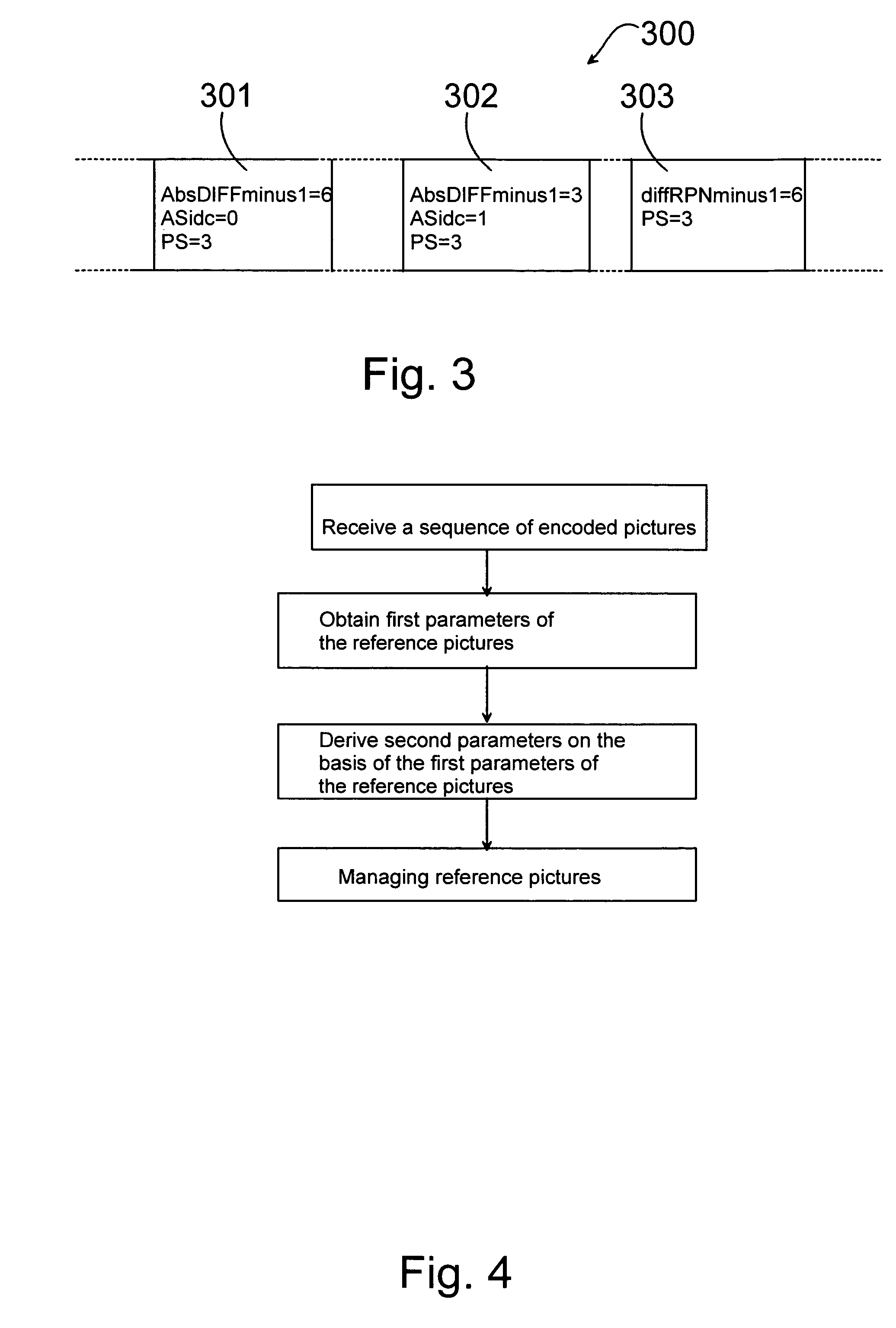Reference picture management in video coding
a reference picture and video coding technology, applied in signal generators with optical-mechanical scanning, color televisions with bandwidth reduction, etc., can solve the problems of increasing implementation complexity for both hardware and software implementations, and the temporal distance between the reference picture and the current picture is limited to be less than 1024 units, so as to achieve efficient signaling of information
- Summary
- Abstract
- Description
- Claims
- Application Information
AI Technical Summary
Benefits of technology
Problems solved by technology
Method used
Image
Examples
Embodiment Construction
[0028] The following implementation aspects of the current invention are described in the way for progressive coding only, where a picture is equivalently a frame. However, it is obvious for them to be extended for use in both progressive coding and interlace coding, where a picture may either be a field or a frame, in the way similarly as in the prior art according to the standard H.264 / AVC. Further, the following aspects of the current invention are described for forward prediction only. It is also obvious for those to be extended for bi-prediction as defined in the standard H.264 / AVC.
[0029] In the following the invention will be described in more detail with reference to the system of FIG. 5, the encoder 1 of FIG. 6 and decoder 2 of FIG. 7. The pictures to be encoded can be, for example, pictures of a video stream from a video source 3, e.g. a camera, a video recorder, etc. The pictures (frames) of the video stream can be divided into smaller portions such as slices. The slices ...
PUM
 Login to View More
Login to View More Abstract
Description
Claims
Application Information
 Login to View More
Login to View More - R&D
- Intellectual Property
- Life Sciences
- Materials
- Tech Scout
- Unparalleled Data Quality
- Higher Quality Content
- 60% Fewer Hallucinations
Browse by: Latest US Patents, China's latest patents, Technical Efficacy Thesaurus, Application Domain, Technology Topic, Popular Technical Reports.
© 2025 PatSnap. All rights reserved.Legal|Privacy policy|Modern Slavery Act Transparency Statement|Sitemap|About US| Contact US: help@patsnap.com



